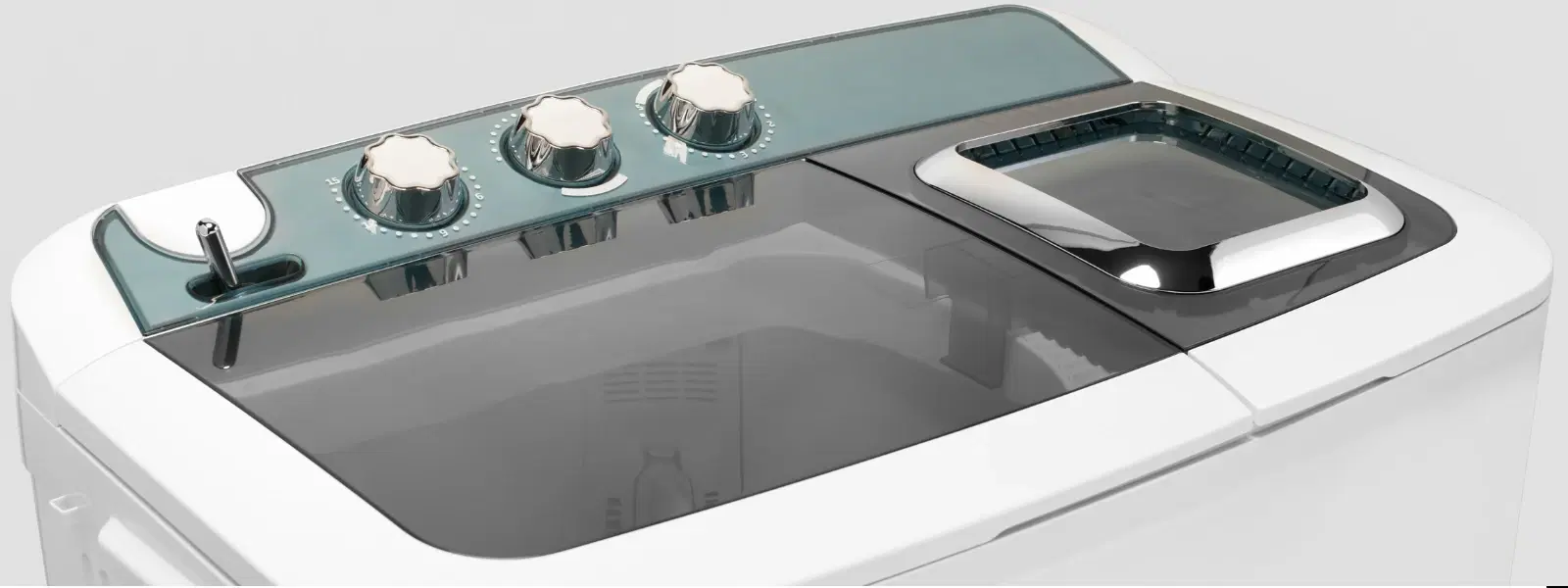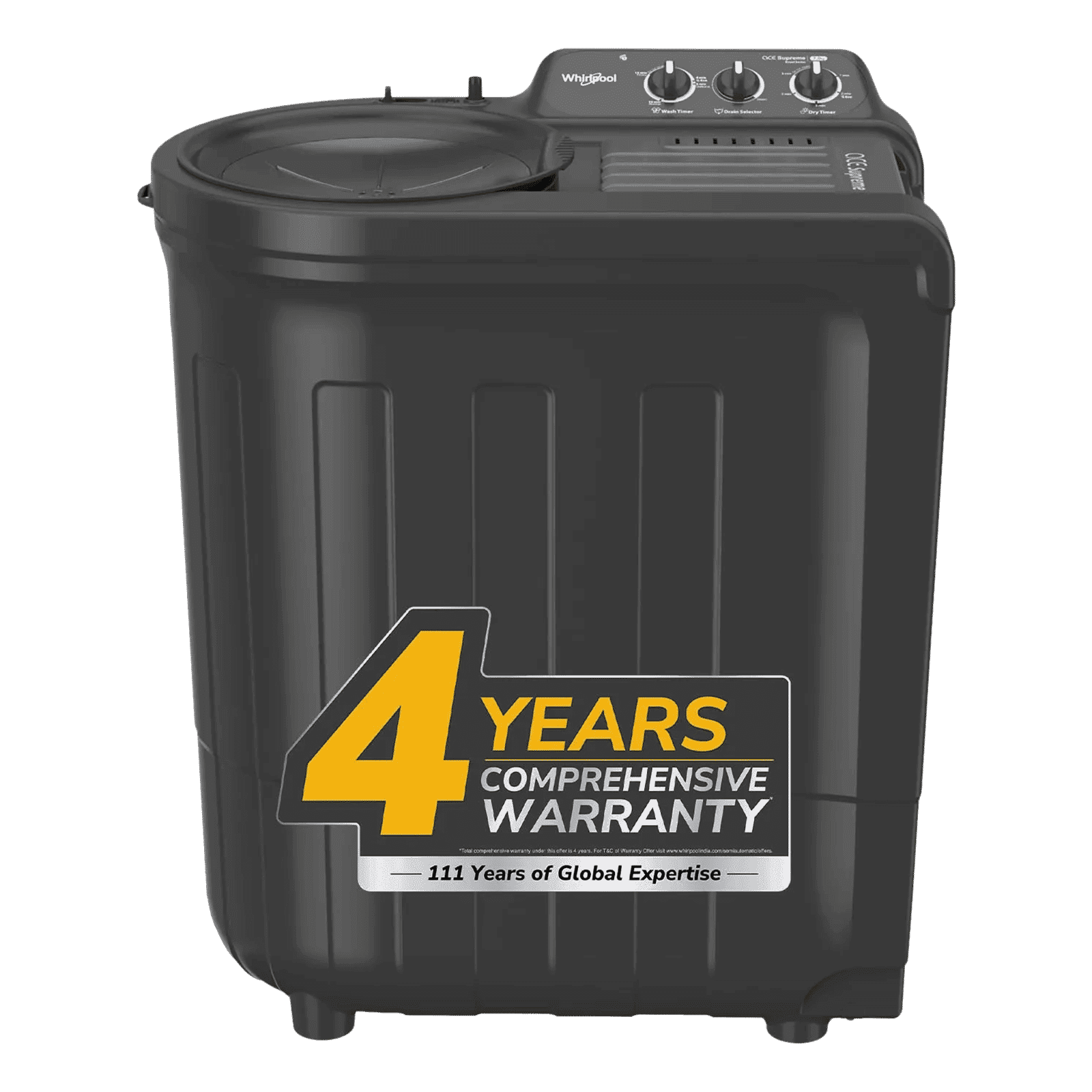
Home Appliances
•07 min read

Buy Whirlpool 7.5 kg 5 Star Semi Automatic Washing Machine with In built Scrubber (Magic Clean, 30291, Grey) online at best prices from Croma. Check product details, reviews & more. Shop now!
When it comes to home appliances, washing machines are a staple in every household. Choosing the right washing machine can significantly impact your daily routine, making laundry less of a chore. Understanding the difference between semi automatic and fully automatic washing machine can help you make an informed decision that best suits your needs. At Tata Neu, we aim to revolutionize online shopping by combining trust and technology, ensuring you have access to a wide range of washing machines that cater to all preferences and budgets.
Whether you are a tech enthusiast looking for the latest innovations, a family seeking reliable appliances, or a young professional investing in productivity-boosting gadgets, this guide will help you understand the key differences between semi-automatic and fully automatic washing machines, and how to choose the best one for your home.
There are several types of washing machines available in the market, each with its unique features and benefits. The most common types include:
Semi-automatic washing machines
Fully automatic washing machines
Front load washing machines
Top load washing machines
Washer-dryer combos
Among these, semi-automatic and fully automatic washing machines are widely popular due to their affordability and ease of use.
Semi-automatic washing machines require manual intervention during the wash cycle. They typically have two separate tubs—one for washing and one for spinning. Users need to transfer clothes from the washing tub to the spinning tub manually.
Fully automatic washing machines handle the entire washing process automatically. These machines have a single tub that performs both washing and spinning, eliminating the need for manual intervention.
Feature | Semi-Automatic | Fully Automatic |
|---|---|---|
Operation | Manual | Automatic |
Tubs | Two | One |
Cost | Lower | Higher |
Water Usage | Less | More |
Ease of Use | Moderate | High |
Semi-automatic washing machines require users to fill the tub with water, add detergent, and start the wash cycle. Once the washing is complete, clothes must be transferred to the spinning tub for drying. This manual intervention is necessary at various stages of the washing process.
Lower cost: Semi-automatic machines are generally more affordable, making them a good choice for budget-conscious families.
Less water usage: These machines use less water, which is beneficial in areas with water scarcity.
Flexibility in operation: Users can control the washing process and adjust settings as needed.

Buy Croma 0.75 Ton 3 Star Window AC (Copper Condenser, Dust Filter) online at best prices from Croma. Check product details, reviews & more. Shop now!
Budget-conscious families
Areas with water scarcity
Users who prefer manual control over the washing process
Fully automatic washing machines handle the entire washing process without manual intervention. Users simply need to load the clothes, add detergent, select the desired wash program, and start the machine. The washing and spinning cycles are completed in a single tub, making the process highly convenient.
Convenience and ease of use: These machines provide a hassle-free washing experience, ideal for busy professionals and families.
Better wash quality: Advanced technology ensures thorough cleaning and care for fabrics.
Time-saving: Automated cycles save time and effort, allowing users to focus on other tasks.
Busy professionals
Families looking for convenience
Users who prefer automated processes
Semi-automatic washing machines have a lower initial purchase cost compared to fully automatic machines. However, fully automatic machines may offer long-term savings through water and energy efficiency.
Fully automatic washing machines generally offer better wash quality and come with additional features such as multiple wash programs, advanced drum types, and smart connectivity.

Buy LG 10 kg 5 Star Fully Automatic Front Load Washing Machine (FHP1410Z5M.AMBQEIL, AI Direct Drive, Middle Black) online at best prices from Croma. Check product details, reviews & more. Shop now!
Semi-automatic machines require more maintenance due to their manual operation and separate tubs. Fully automatic machines are designed for durability and often come with better after-sales support.
Semi-automatic machines offer moderate ease of use, requiring manual intervention. Fully automatic machines provide a seamless user experience with minimal effort.
Assess your laundry needs: Consider the frequency and volume of laundry to determine the best type of machine.
Consider space and installation: Ensure you have adequate space for the machine and proper installation facilities.
Budget and long-term savings: Factor in the initial cost, operational costs, and potential long-term savings.
Importance of after-sales support: Choose a brand that offers reliable after-sales support for maintenance and repairs.
Energy efficiency: Look for machines with high energy ratings to save on electricity bills.
Wash programs: Choose machines with multiple wash programs to cater to different fabric types and cleaning needs.
Additional features: Consider features like child lock, smart connectivity, and quick wash options for added convenience.
When selecting the best washing machine for home, consider the following factors:
Budget: Determine your budget and explore options within that range.
Space: Measure the available space to ensure the machine fits comfortably.
Laundry load: Choose a machine with a suitable capacity for your household's laundry needs.
Personal preferences: Consider features that are important to you, such as wash programs and energy efficiency.
Brand reputation: Opt for trusted brands that offer reliable products and excellent after-sales support.
Semi-automatic machines require manual intervention and have separate tubs for washing and spinning, while fully automatic machines handle the entire process automatically in a single tub.
Fully automatic washing machines are generally more energy-efficient, especially those with high energy ratings.
Semi-automatic machines may require more frequent maintenance due to their manual operation, while fully automatic machines are designed for durability and often come with better after-sales support.
Yes, fully automatic washing machines are designed to handle larger loads efficiently, making them suitable for families with high laundry volumes.
Consider your budget, space, laundry load, and desired features. Opt for a reputable brand that offers reliable products and good after-sales support.
Generally, fully automatic washing machines tend to use more water per cycle compared to semi-automatic ones. However, many modern fully automatic machines come with water-saving features that optimize water usage based on the load size and type of wash program selected.
Brands like Croma, LG, Samsung, and Whirlpool are renowned for their reliable washing machines. Shopping from Croma offers advanced technology with a wide budget range, express delivery, and unmatched after-sales support.
In summary, the choice between semi-automatic and fully automatic washing machines depends on your budget, preferences, and laundry needs. Semi-automatic machines are cost-effective and use less water, making them ideal for budget-conscious families and areas with water scarcity. Fully automatic machines offer convenience, better wash quality, and time-saving features, perfect for busy professionals and families seeking ease of use.
Explore a wide range of washing machines and other home appliances on Tata Neu. Enjoy the benefits of shopping with Tata Neu, including earning up to 5% NeuCoins on every purchase, express delivery for orders placed before 6 PM, and expert guidance to help you make the best choice for your home. Shop smartly and conveniently with Tata Neu, where trust and technology come together to enhance your shopping experience.